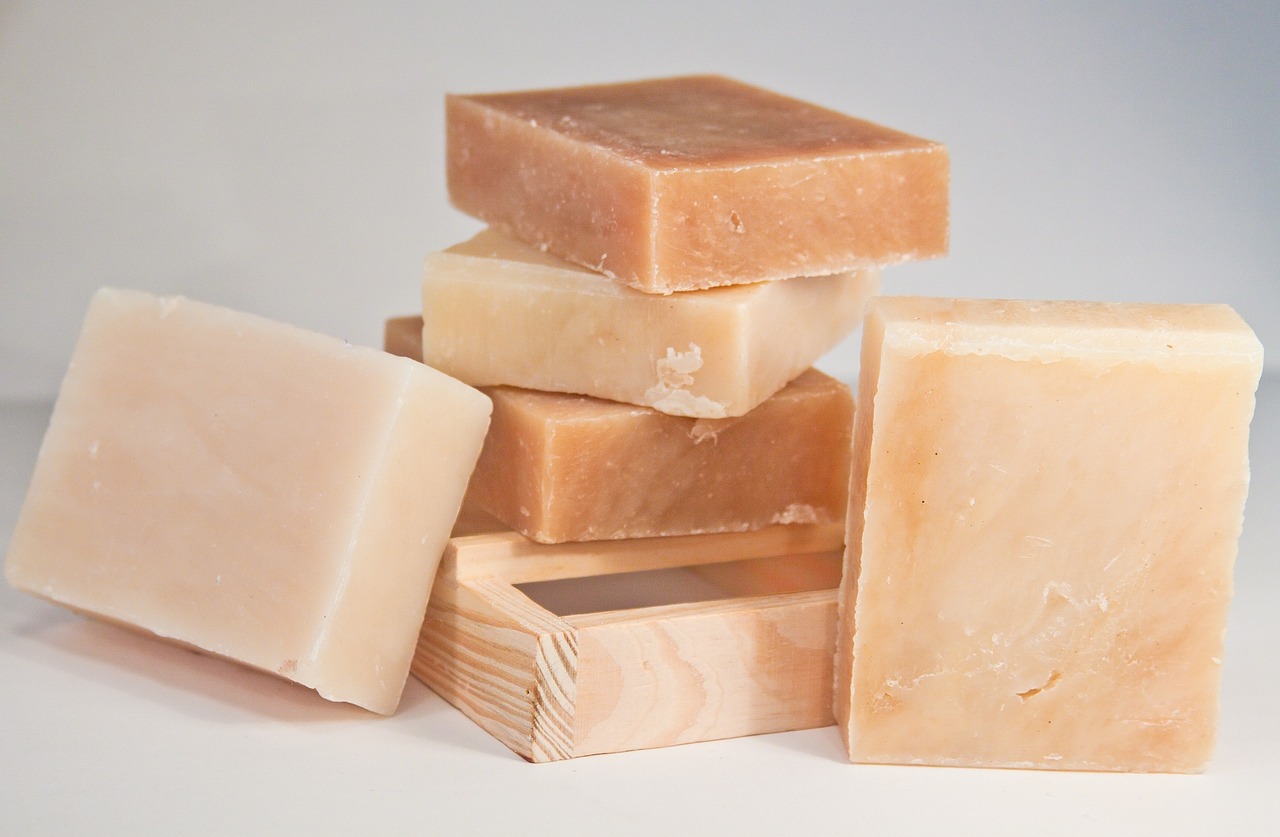
Good, Clean, Fun!
Like most of us, you’ve probably been washing your hands a lot recently, and using a lot of soap too. Where does soap come from, and how does it do what it does so well? To answer these questions, we have to get out our microscopes and travel back in time!
HISTORY OF SOAP
Tracing the history of soap-making is challenging because the ingredients in soap decompose over time. Researchers think that the first soaps may have been made while cooking meat over an open fire. When fat from the roasted animal is mixed with the fire’s ashes, saponification could have occurred because ashes contain alkali chemicals. Since these materials are easy to find in nature, it is possible that soap was invented several times by different people all around the world! We do know that ancient writings from Egypt and Babylon contain recipes for many different types of soaps. Some types were used as medicine or to wash fabrics while other kinds were meant for religious rituals. By dating these texts, we know that people in those regions have been making soap for at least 3,500 years, and maybe even longer!
Though humans have been making soap for millennia, it wasn’t until much more recently that we were able to understand how the science actually works. First, it is important to know that oil and water cannot be mixed together. Try to stir a few drops of cooking oil into a glass of water. You will see that no matter how much you mix, the oil and water will eventually separate into two distinct layers. It is because of this rule that soaps work so well as cleaners.
Soap molecules have two very distinct parts with very different properties. The “head” of the molecule is “hydrophilic,” meaning it is attracted to water and repelled by fats and oils. The “tail” of the molecule is “hydrophobic,” meaning it is attracted to fats and oils and repelled by water. When you put soap and water on your hands and then scrub, the soap molecules form structures called micelles. These look like bubbles where all the hydrophilic heads are on the outside, and all the hydrophobic tails on the inside. This way, the oil-loving tails do not have to touch any water. Oils from the skin get trapped inside these structures, along with any dirt or germs that were on your hands. Add running water, and everything gets flushed off!
In the case of covid-19, however, soap actually does a lot more. The coronavirus particle has two parts: a fragile inside where it keeps all of its vital parts and a protective outside shell made of lipids. Lipids are the same type of molecules as fat and oils. When soap meets the coronavirus, it forms micelles that trap bits of the virus’s protective shell inside them, ripping the cell apart. Without its protective shell, the fragile insides of the virus can be dissolved and washed away!
